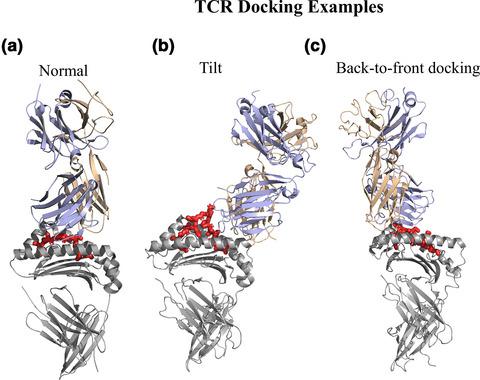当前位置:
X-MOL 学术
›
Immunol. Cell Biol.
›
论文详情
Our official English website, www.x-mol.net, welcomes your
feedback! (Note: you will need to create a separate account there.)
The human T‐cell receptor repertoire in health and disease and potential for omics integration
Immunology and Cell Biology ( IF 3.2 ) Pub Date : 2020-07-16 , DOI: 10.1111/imcb.12377 Thomas S Watkins 1, 2, 3 , John J Miles 1, 2, 3
Immunology and Cell Biology ( IF 3.2 ) Pub Date : 2020-07-16 , DOI: 10.1111/imcb.12377 Thomas S Watkins 1, 2, 3 , John J Miles 1, 2, 3
Affiliation

|
The adaptive immune system arose 600 million years ago in a cold‐blooded fish. Over countless generations, our antecedents tuned the function of the T‐cell receptor (TCR). The TCR system is arguably the most complex known to science. The TCR evolved hypervariability to fight the hypervariability of pathogens and cancers that look to consume our resources. This review describes the genetics and architecture of the human TCR and highlights surprising new discoveries over the past years that have disproved very old dogmas. The standardization of TCR sequencing data is discussed in preparation for big data bioinformatics and predictive analysis. We next catalogue new signatures and phenomenon discovered by TCR next generation sequencing (NGS) in health and disease and work that remain to be done in this space. Finally, we discuss how TCR NGS can add to immunodiagnostics and integrate with other omics platforms for both a deeper understanding of TCR biology and its use in the clinical setting.
中文翻译:

健康和疾病中的人类 T 细胞受体库以及组学整合的潜力
适应性免疫系统在 6 亿年前出现在一条冷血鱼身上。经过无数代,我们的先行者调整了 T 细胞受体 (TCR) 的功能。TCR 系统可以说是科学界已知的最复杂的系统。TCR 进化出了高变异性,以对抗希望消耗我们资源的病原体和癌症的高变异性。这篇综述描述了人类 TCR 的遗传学和结构,并强调了过去几年令人惊讶的新发现,这些发现推翻了非常古老的教条。讨论 TCR 测序数据的标准化,为大数据生物信息学和预测分析做准备。接下来,我们将对 TCR 下一代测序 (NGS) 在健康和疾病方面发现的新特征和现象进行编目,以及该领域仍有待完成的工作。最后,
更新日期:2020-07-16
中文翻译:

健康和疾病中的人类 T 细胞受体库以及组学整合的潜力
适应性免疫系统在 6 亿年前出现在一条冷血鱼身上。经过无数代,我们的先行者调整了 T 细胞受体 (TCR) 的功能。TCR 系统可以说是科学界已知的最复杂的系统。TCR 进化出了高变异性,以对抗希望消耗我们资源的病原体和癌症的高变异性。这篇综述描述了人类 TCR 的遗传学和结构,并强调了过去几年令人惊讶的新发现,这些发现推翻了非常古老的教条。讨论 TCR 测序数据的标准化,为大数据生物信息学和预测分析做准备。接下来,我们将对 TCR 下一代测序 (NGS) 在健康和疾病方面发现的新特征和现象进行编目,以及该领域仍有待完成的工作。最后,











































 京公网安备 11010802027423号
京公网安备 11010802027423号